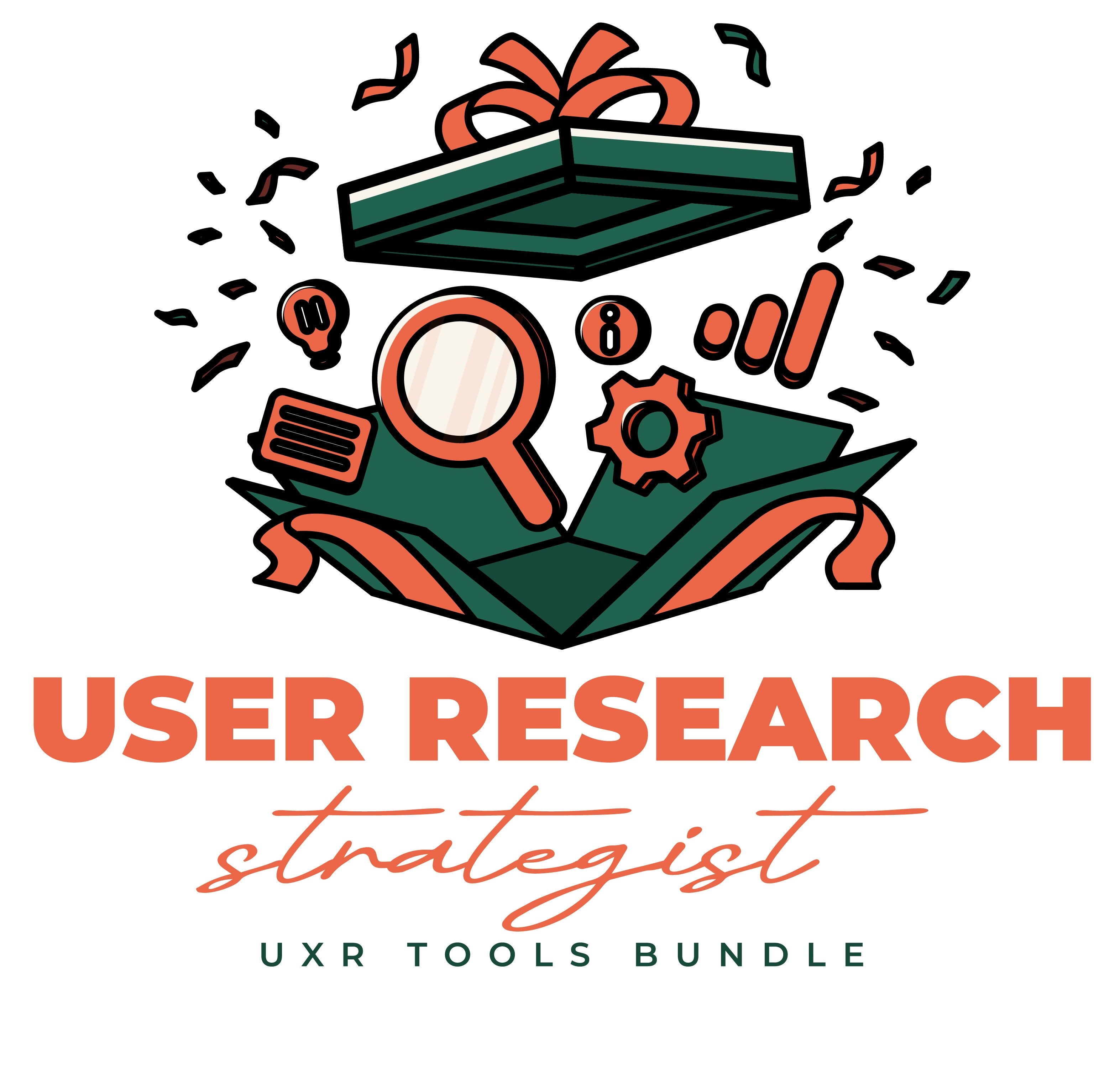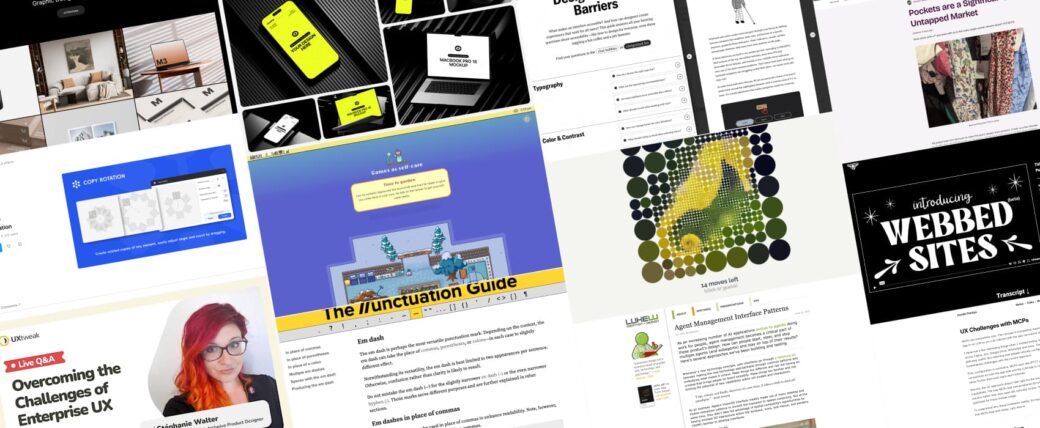Interactivity
Fairness isn’t a metric: what creatives in tech should learn from the WGA strikes
How AI, plagiarism, and burnout are challenging what we consider fair in the business of design.Image AI Generated: MidjourneyThe 2008 Writers Guild of America (WGA) strike reshaped media labor, and tech may be on the verge of a similar reckoning.Bungie’s Marathon plagiarism scandal exposed systemic failures in attribution and accountability.Creative workers are more essential than ever, but often erased from the final product, especially when that work is generated using AI.Fairness in creative
How do you design when your company isn’t sure what the roadmap looks like?
Many companies (and design teams) are shrinking back into becoming startups. Here’s how to surviveContinue reading on UX Collective »

Turning User Research Into Real Organizational Change
This article is a sponsored by LyssnaWe’ve all been there: you pour your heart and soul into conducting meticulous user research. You gather insightful data, create detailed reports, and confidently deliver your findings. Yet, months later, little has changed. Your research sits idle on someone’s desk, gathering digital dust. It feels frustrating, like carefully preparing a fantastic meal, only to have it left uneaten.There are so many useful tools (like Lysnna) to help us run incredible user r
GenAI dataviz: color scheming with a Claude tetrad
In this writing, I discuss how the Generative AI (GenAI) system, Claude, handles the request to suggest a tetrad color harmony that passes…Continue reading on UX Collective »

A new perk for annual members: Free access to the most trusted tools in user research
I’m SO excited to announce the User Research Tools Bundle!!! 🎉After two years of brainstorming, research, and lots of thinking, I am so excited to finally launch the User Research Tools Bundle — my main goal being to bring more accessibility, inspiration, and efficiency to our wonderful community.This is the first time these tools have come together in one place. Each tool has been selected for a clear purpose in the research workflow, from recruitment to testing, in-product
Design is a language
Understanding levels of linguistic change can help designers in an era of uncertaintyLanguage is thought of primarily as a tool for communication, but it also helps structure our thoughts, create nuanced concepts, and augment our imagination and creativity. Image created by the author with GPT-4oDesign is rapidly changing. From the ubiquity of AI (and the era of AI hardware) to the shift in modality (Apple prioritising design elements from visionOS), there is a lot of uncertainty.It’s important

Never Stop Exploring (July 2025 Wallpapers Edition)
For many of us, July is the epitome of summer. The time for spending every free minute outside to enjoy the sun and those seemingly endless summer days, whether it’s in a nearby park, by a lake, or on a trip exploring new places. So why not bring a bit of that summer joy to your desktop, too?For this wallpapers post, artists and designers from across the globe once again tickled their creativity and designed desktop wallpapers that capture that very special July feeling — just like it has been a
CLS Is the New Page Speed: Why Designers Need to Care More Than Developers
Designers, your gorgeous layout might be silently sabotaging your site—**if it shifts mid-scroll, it’s not elegant, it’s broken.** CLS isn’t just a dev metric—it’s the UX red flag your users feel *before* they bounce.
Broken rhetoric of AI, goodbye Siri, accessible type, beyond journey maps
Weekly curated resources for designers — thinkers and makers.“We’re about a year into the Great AI Divide, or whatever our history-keeping algorithms decide to call this moment, and even the most literate among us can’t help falling into the same old rhetorical pitfalls — ones that seem to alienate more people than they invite into the conversation.”The broken rhetoric of AI →By Mike SchindlerProduct Design for AI: a UX-first guide to smarter AI experiences →[Sponsored] Stop guessing. Start desi
New innovation cycle; same wicked problem
AI promises amplified intelligence, but are we repeating old habits that bankrupt our thinking?Continue reading on UX Collective »
Guide to custom UI for Augmented Reality
How to design interfaces that get the most out of AR headsetsRace for Augmented Reality glasses is heating up. Meta presented Orion prototype, Apple is reportedly set on beating Orion to market with their own product. Then Google, all of the sudden, revealed Android XR and its own take on AR glasses.Clearly there is a lot going on — I realized we might be developing 3D apps sooner than we thought. Since I refuse to be left behind, I had to figure it out.Imagine my surprise when I discovered the
European Accessibility Act: how to respond to this new legislation
Image by Gareth Ford-WilliamsWith the European Accessibility Act (EAA) now upon us, I have decided to take a little time to reflect on what my approach is, and to make some suggestions about what the good questions are that we should all be asking. This article is for any organsation in-scope, with over 10 members of staff. over €2 million in turnover, providing a service direvtly to the general public and trading from or into the EU from anywhere in the world.Over the last 6 months there there
Designing for everyone, not just the average
Designing for everyone, not just the averageWhen design treats users as identical, experience suffers.During my time leading design at a major e-commerce company, one project has stuck with me: a banner test that seemed successful on the surface but ultimately revealed a blind spot in our thinking. That test helped shape my view of how modern digital experiences fall short — not because the design was bad, but because it only served the average user.That realization started a deeper inquiry. If
Why there's no dominant AI app store yet: The hardware platform thesis
Every major app ecosystem emerged alongside hardware that enabled new categories of experiences:iPhone (2007): Touch interface, GPS, camera, accelerometer → Instagram, Uber, Angry BirdsSteam (2004): Powerful PCs with broadband → complex multiplayer gamesGaming consoles: Custom chips → exclusive AAA games that drove platform adoptionVR headsets: Spatial tracking → immersive experiences impossible on phonesSmart TVs: Living room + remote → streaming apps optimized for 10-foot UICurrent AI "ap
RAAEE: The ultimate tracking framework for your product features
Most teams only look at “what users click”, but that’s just the tip of the iceberg.Every day, we make design decisions without seeing the whole picture. We go by assumptions, internal opinions, or superficial metrics. We see that a screen has traffic, and we assume it’s working. But… is it really serving its purpose?If you want to build a real product that scales, makes an impact, and lasts, you need a radically deeper view of how every part of your UI is used. That starts with asking the right
The eleven commandments of AI UX
Sacred principles for the intelligence era.From chaos comes order. The Commandments of AI UX — sacred principles that will separate AI UX leaders from the lost.In the beginning, there was chaos.Interfaces without intelligence. Intelligence without empathy. Designers building for yesterday while AI reshapes tomorrow. Teams drowning in possibility, paralyzed by complexity, lost in the noise of a thousand AI tools promising everything and delivering confusion.The old rules no longer apply. The fami

Pixels of the Week – June 29, 2025
👉🏻 Curated weekly UX Research, Design & Tech resources: design beyond barriers guide, the market for pockets and search UX, UX challenges with MCPs, agent management interface patterns, a fun daily game, a Figma copy rotation plugin, a punctuation guide, a study on cozy game, fake product mockups, and a satirical video on site generators.

Micro-Interactions: The tiny magic behind big user love
In the fast lane of modern product companies, there’s one golden truth:
If you’re not engaging your users, you’re losing them.
Every brand…
How LinkedIn passed $2bn in subscription revenue
And they’re still missing out on their potentialContinue reading on UX Collective »

Meet Accessible UX Research, A Brand-New Smashing Book
UX research can take so much of the guesswork out of the design process! But it’s easy to forget just how different people are and how their needs and preferences can vary. We can’t predict the needs of every user, but we shouldn’t expect different people using the product in roughly the same way. That’s how we end up with an incomplete, inaccurate, or simply wrong picture of our customers.There is no shortage of accessibility checklists and guidelines. But accessibility isn’t a checklist. It do





